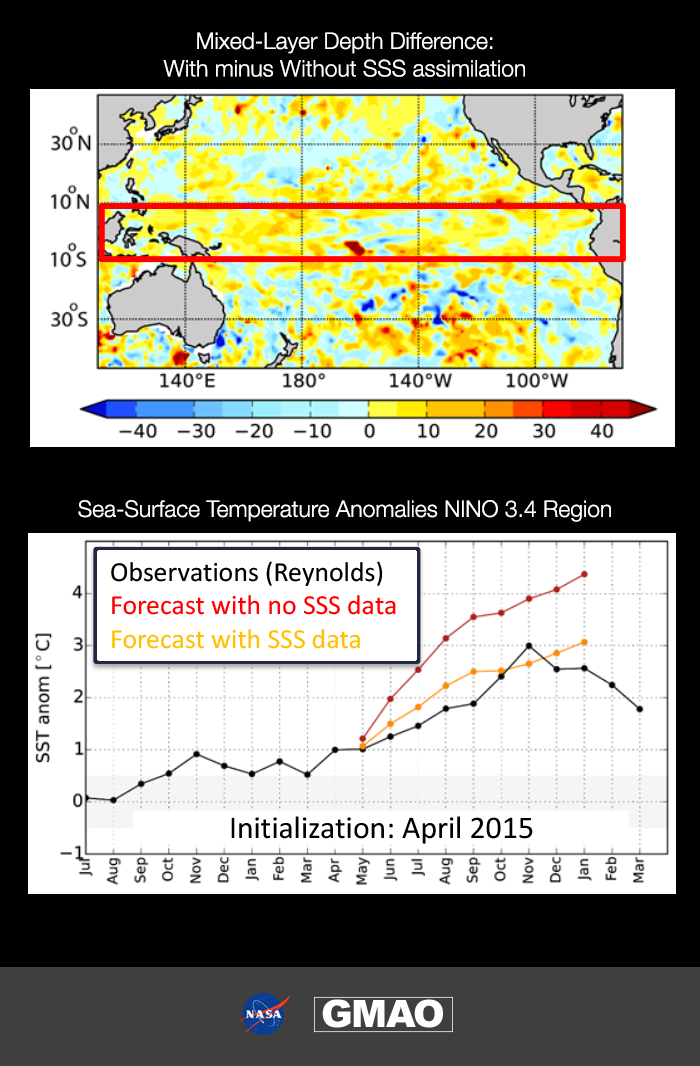Impact of Satellite Sea Surface Salinity Observations on ENSO Predictions
Authors: E. Hackert, R. Kovach, J. Marshak, A. Borovikov, A. Molod, and G. Vernieres
Assimilating satellite sea surface salinity (SSS) from NASA’s Aquarius and SMAP instruments improves the analyses of the near-surface density and the mixed layer depth (MLD). The deeper MLD in the initial conditions in April 2015 (top image) acts to dampen the ENSO Kelvin signal, resulting in improved seasonal forecasts for the 2015 El Niño (bottom).
Including SSS in the analyses increases salinity, causing higher near-surface density within the equatorial waveguide, leading in turn to a deeper MLD that dampens the ENSO signal in the forecasts due to the reduced efficiency of wind forcing on a relatively deeper mixed layer, producing a more realistic forecast of the El Niño event.
Beneficial Impact on ENSO Predictions of Assimilating Satellite Sea Surface Salinity Observations in GEOS S2S
TOP: Differences in oceanic mixed-layer depth in the GEOS analyses with minus without assimilation of the Aquarius and SMAP SSS observations.
BOTTOM: NINO3.4 ensemble forecast plume average plots initialized from the April 2015 experiment that assimilates all available satellite SSS (gold line) versus no SSS assimilation (red line). The validating SST anomalies are in black.


